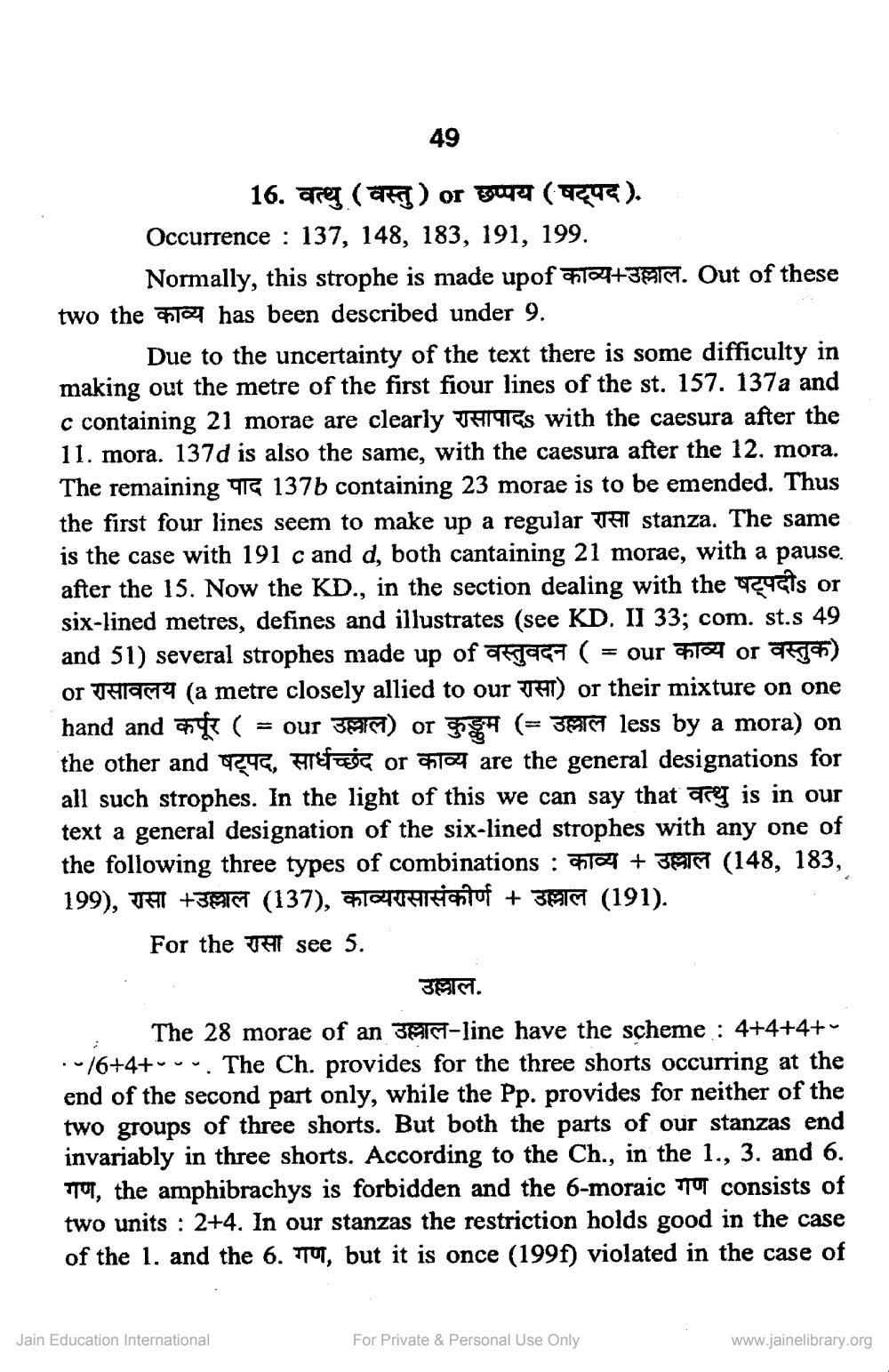________________
16. apres (ar) or super ( 43). Occurrence : 137, 148, 183, 191, 199.
Normally, this strophe is made upof opt4+394. Out of these two the 17 has been described under 9.
Due to the uncertainty of the text there is some difficulty in making out the metre of the first fiour lines of the st. 157. 137a and c containing 21 morae are clearly 141916s with the caesura after the 11. mora. 137d is also the same, with the caesura after the 12. mora. The remaining 1 137b containing 23 morae is to be emended. Thus the first four lines seem to make up a regular i stanza. The same is the case with 191 c and d, both cantaining 21 morae, with a pause. after the 15. Now the KD., in the section dealing with the cuts or six-lined metres, defines and illustrates (see KD. II 33; com. st.s 49 and 51) several strophes made up of वस्तुवदन ( = our काव्य or वस्तुक) or Thracta (a metre closely allied to our Th) or their mixture on one hand and कर्पूर ( = our उल्लाल) or कुङ्कम (= उल्लाल less by a mora) on the other and षट्पद, सार्धच्छंद or काव्य are the general designations for all such strophes. In the light of this we can say that are is in our text a general designation of the six-lined strophes with any one of the following three types of combinations : Tom + 3M (148, 183, 199), TAI +386 (137), Homerichtof + 3A4 (191). For the ti see 5.
36. The 28 morae of an 3FIT-line have the scheme : 4+4+4+.-16+4+www. The Ch. provides for the three shorts occurring at the end of the second part only, while the Pp. provides for neither of the two groups of three shorts. But both the parts of our stanzas end invariably in three shorts. According to the Ch., in the 1., 3. and 6. TT, the amphibrachys is forbidden and the 6-moraic To consists of two units : 2+4. In our stanzas the restriction holds good in the case of the 1. and the 6. To, but it is once (1998) violated in the case of
Jain Education International
For Private & Personal Use Only
www.jainelibrary.org




